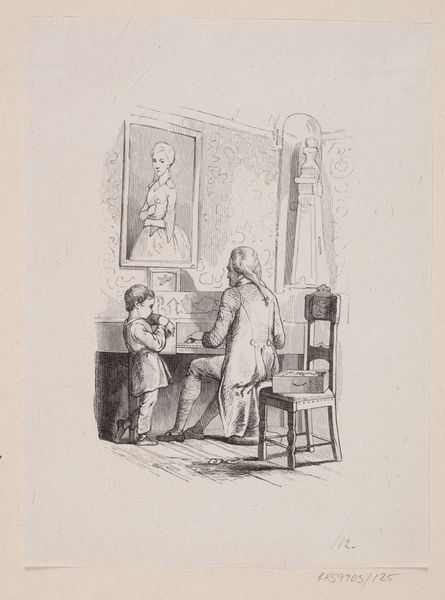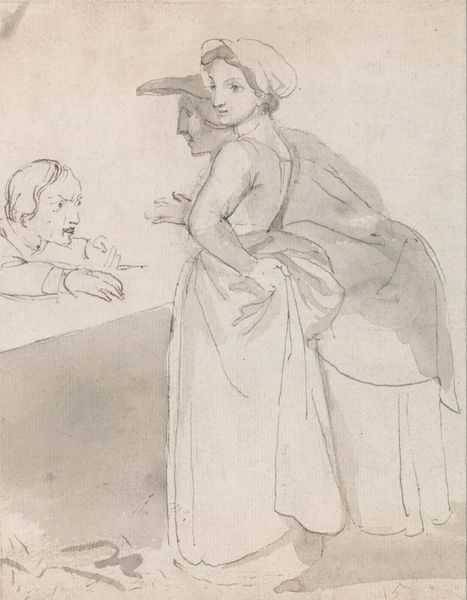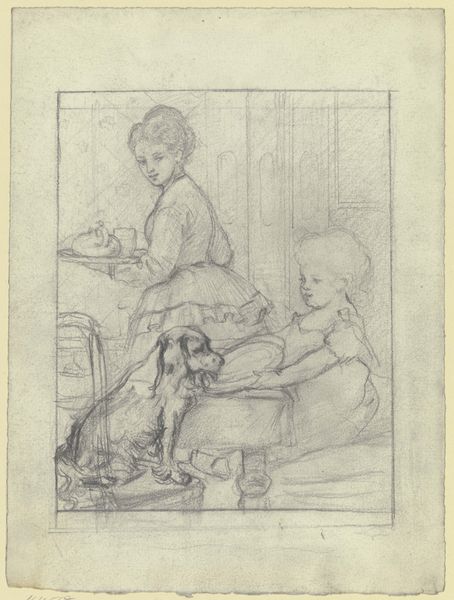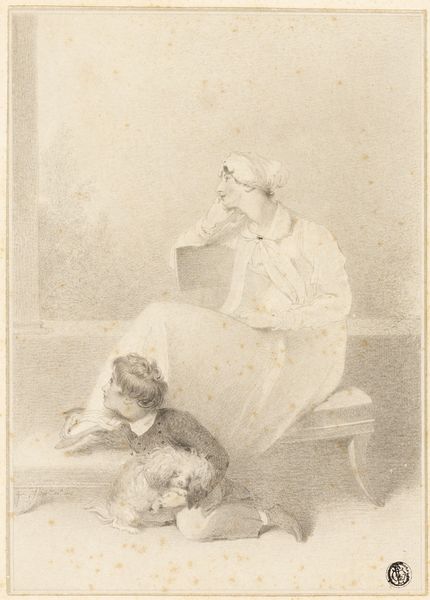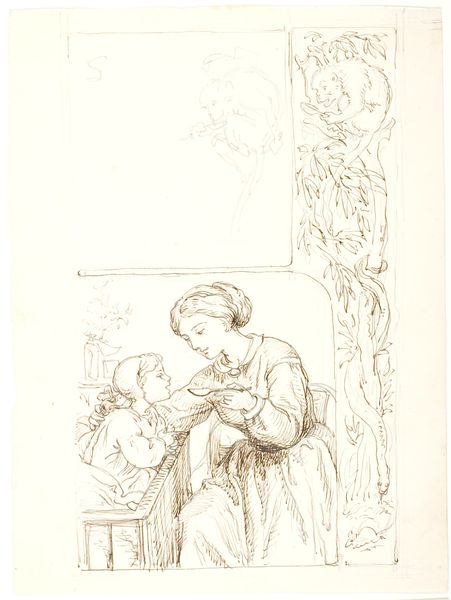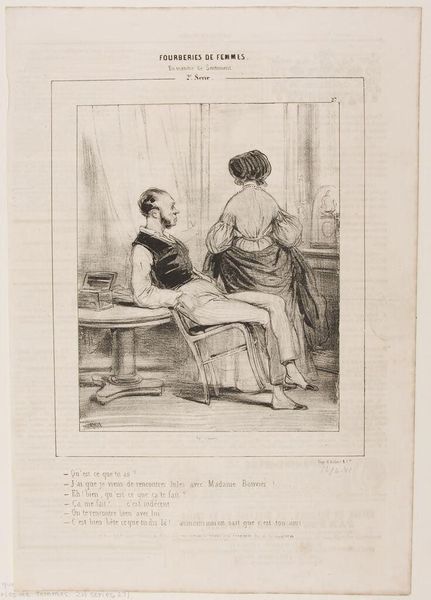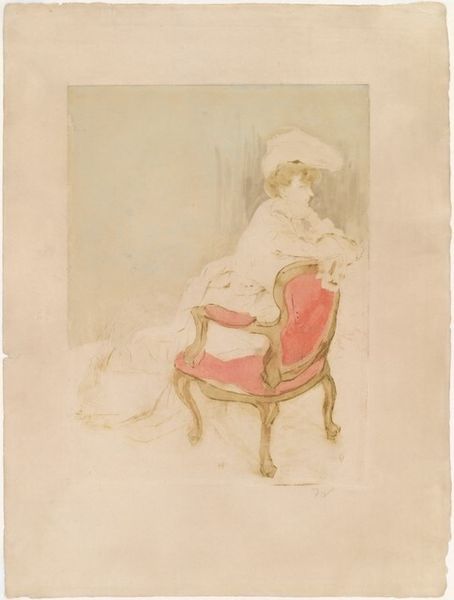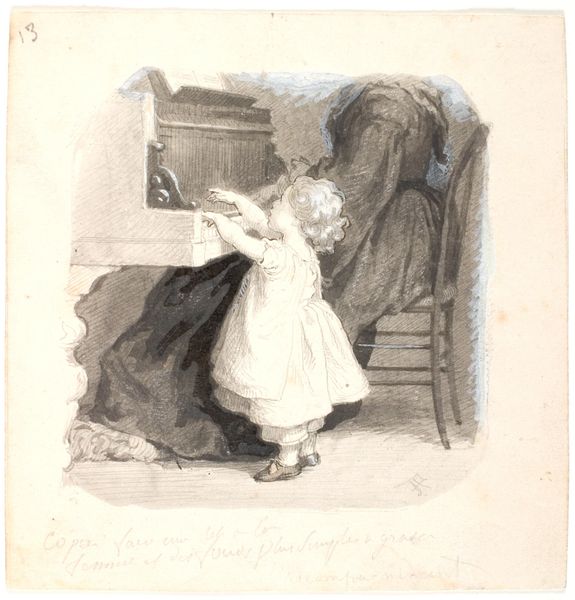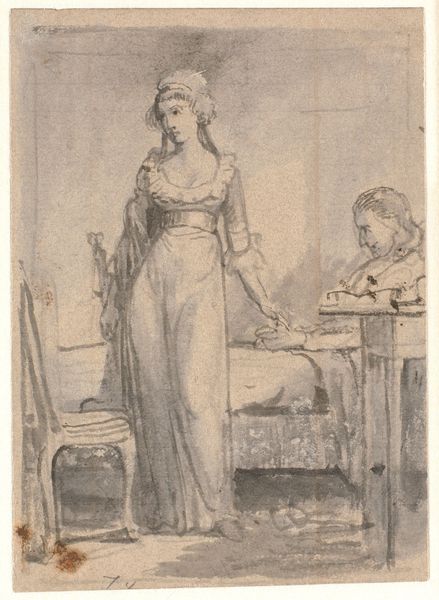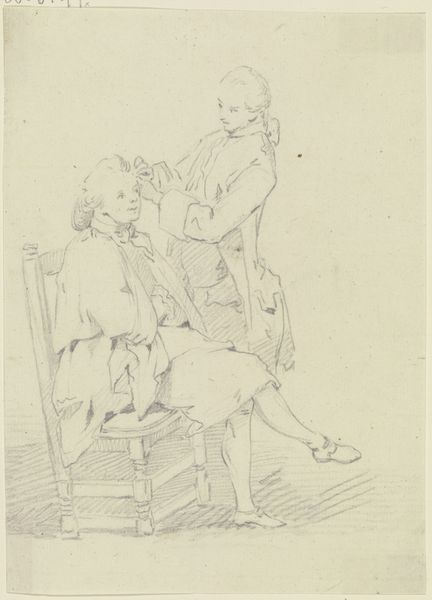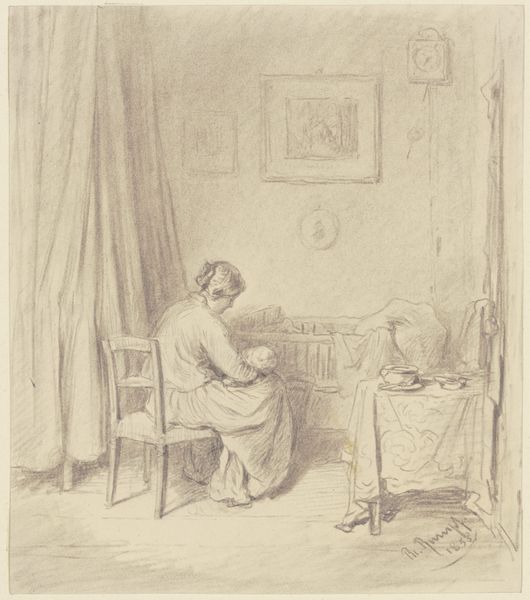
drawing, pencil
#
portrait
#
drawing
#
pencil
#
genre-painting
Dimensions: 149 mm (height) x 122 mm (width) (bladmaal)
Curator: The artwork we’re observing is titled "Lili vil synge for en sou," which translates to "Lili will sing for a sou.” Created in 1861 by Lorenz Frølich, this piece is rendered in delicate pencil on paper. Editor: It's overwhelmingly delicate; the lines are so fine they seem almost ethereal. It evokes a quiet, contemplative mood—there's something almost sentimental about the scene. Curator: Indeed. Frølich, during the Danish Golden Age, often portrayed scenes of domestic life infused with narrative weight. In this, we see a young girl looking up to her mother as if negotiating the very concept of performance and compensation. What do you read from that? Editor: Structurally, there's a strong vertical emphasis; the bureau, the mother, the chair—all drawing the eye upward and contributing to that serene feeling. The paleness reinforces that delicacy, although it lacks robust form and instead blends to suggest something of ephemeral sentiment. Curator: Perhaps more than ephemeral, the narrative gestures toward economic realities embedded in childhood. Singing for money points toward a very specific kind of performativity, reflecting socio-economic dynamics within domestic spaces. It’s almost a visual ethnography. Editor: That verticality also directs our attention to Lili, whose form is subtly more distinct than the adult. There's a formal weight given to her by the contrast and texture—drawing a conceptual, aesthetic parallel that the work has been dedicated to her likeness in a world still marked by patriarchy. Curator: Yes, the gaze between mother and daughter encapsulates a whole spectrum of expectations and nascent awareness of social currency and even female expectations. There's an entire network of symbolic exchanges occurring here. Editor: For me, considering only the visual syntax, it's amazing how a piece rendered in such sparse materials can produce this full emotive narrative. Curator: A perfect example of how seemingly simple depictions of domesticity can offer deep insight into social dynamics through enduring images, yes? Editor: Agreed; now that you've pointed toward it, I understand there's considerable cultural value in a genre painting as ostensibly straightforward as this.
Comments
No comments
Be the first to comment and join the conversation on the ultimate creative platform.

